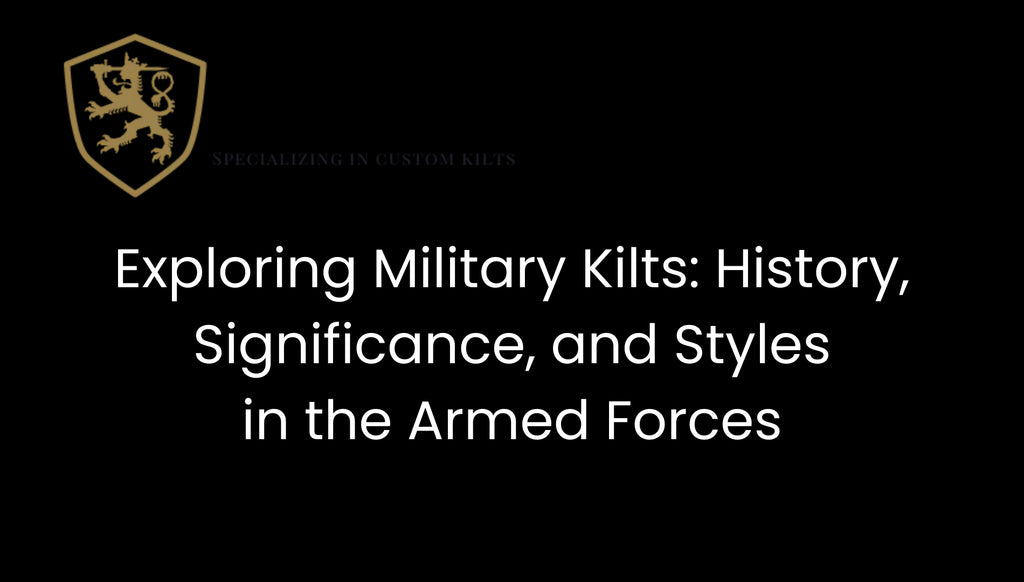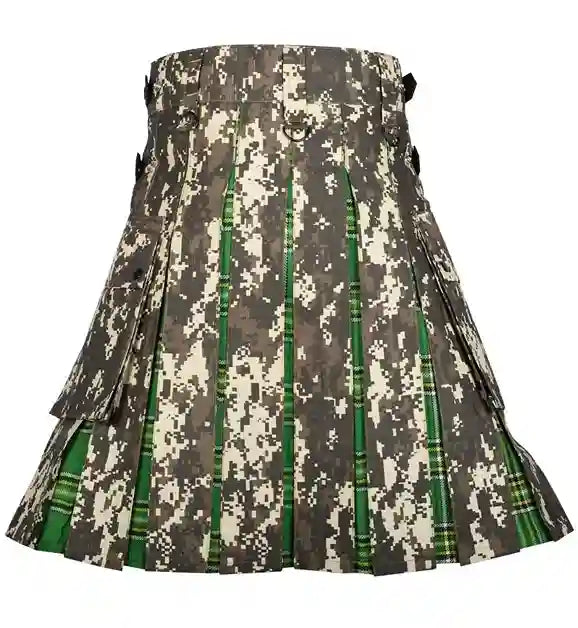Exploring the Essence of Military Kilts: Tradition, Symbolism, and Acquisition
Posted by FAGENT ABRONT

Military kilts hold a unique and storied position in the fabric of military history and culture. Often associated with Scottish regiments and heritage, these distinctive garments have transcended their traditional roots to become symbols of pride, honour, and identity in various armed forces around the world. This article delves into the rich history of military kilts, exploring their evolution from battlefield attire to ceremonial garb. We will uncover the significance behind different styles and patterns, particularly those specific to various military branches, and discuss how these kilts have been adapted and embraced in modern military and civilian life.
In modern times, military kilts retain their relevance and popularity primarily as powerful symbols of cultural heritage and historical significance, particularly in Scottish and Celtic regiments. They serve as a vivid reminder of the martial traditions and valiant history associated with kilted regiments, often used in ceremonial and formal contexts to evoke a sense of pride, tradition, and distinct identity.
What is a Military Kilt?
A military kilt is a traditional garment, often associated with Scottish regiments, that forms a part of their ceremonial and dress uniforms. It's a type of kilt specifically designed for use in the military, retaining the classic features of a traditional Scottish kilt – a knee-length skirt with pleats at the rear, made from tartan fabric. The tartan pattern often corresponds to specific regiments, reflecting their unique heritage and identity. Originally worn as a part of everyday uniform, the military kilt now primarily serves a ceremonial role. It symbolises the rich history and traditions of the regiments that wear it, embodying a sense of pride, honour, and cultural connection to Scotland. The military kilt is not just a piece of clothing but a significant emblem of military heritage, especially in units with Scottish or Celtic origins.
Military Tartan Kilts: A Symbol of Pride and Heritage
Military tartan kilts stand as a profound symbol of pride and heritage, particularly in Scottish regiments. Each tartan pattern is imbued with the history and identity of its respective military unit, making these kilts much more than mere garments. They are wearable emblems of lineage, valour, and the enduring spirit of the regiments they represent. The distinctive colours and patterns of the tartans often trace back to specific clans or geographical regions in Scotland, thereby rooting soldiers in a rich cultural and historical tapestry. In contemporary times, while their practical use in combat has diminished, these kilts continue to be a central feature in ceremonial and formal military occasions. Their presence in parades and official events is not just a nod to tradition but a vivid celebration of a legacy that spans centuries, encapsulating the honour, camaraderie, and resilient spirit of those who serve in these distinguished units.
Purchase Military Kilts



Summary
Military kilts have a rich history and cultural significance, playing notable roles in both military and civilian life. In the military, kilts have been a symbol of valor and tradition, particularly in Scottish and Irish regiments. They represent the heritage and fighting spirit of the soldiers, often seen as a badge of honor and a tangible link to history. In civilian life, kilts transition from a symbol of military prowess to one of cultural identity and celebration. They are worn at cultural events, weddings, and festivals, showcasing regional pride and heritage. This dual role of military kilts highlights their versatility as both a functional part of military uniform and a cherished symbol of cultural identity and tradition in civilian life.
